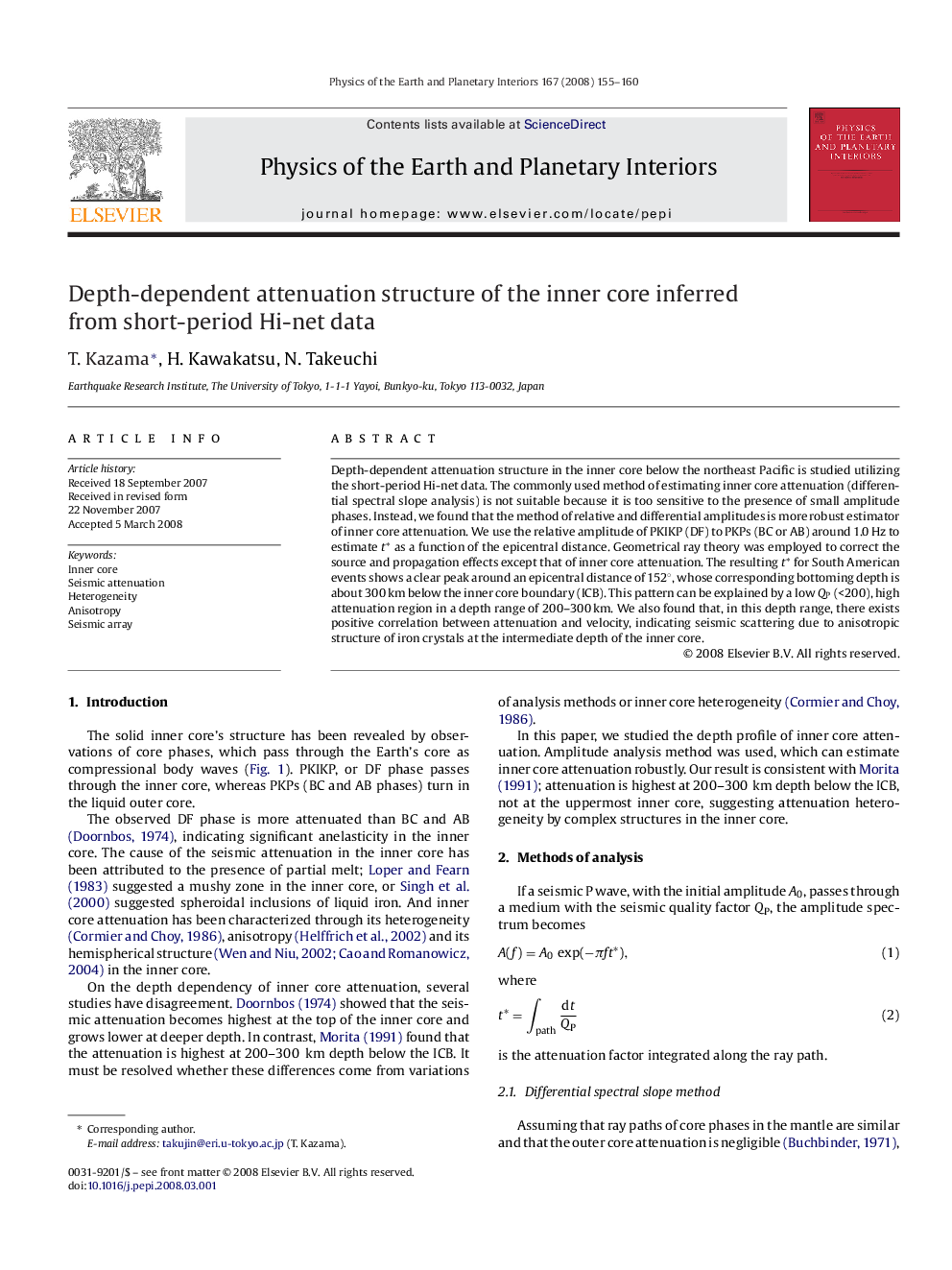| Article ID | Journal | Published Year | Pages | File Type |
|---|---|---|---|---|
| 4742439 | Physics of the Earth and Planetary Interiors | 2008 | 6 Pages |
Depth-dependent attenuation structure in the inner core below the northeast Pacific is studied utilizing the short-period Hi-net data. The commonly used method of estimating inner core attenuation (differential spectral slope analysis) is not suitable because it is too sensitive to the presence of small amplitude phases. Instead, we found that the method of relative and differential amplitudes is more robust estimator of inner core attenuation. We use the relative amplitude of PKIKP (DF) to PKPs (BC or AB) around 1.0 Hz to estimate t∗t∗ as a function of the epicentral distance. Geometrical ray theory was employed to correct the source and propagation effects except that of inner core attenuation. The resulting t∗t∗ for South American events shows a clear peak around an epicentral distance of 152°152°, whose corresponding bottoming depth is about 300 km below the inner core boundary (ICB). This pattern can be explained by a low QPQP (<200), high attenuation region in a depth range of 200–300 km. We also found that, in this depth range, there exists positive correlation between attenuation and velocity, indicating seismic scattering due to anisotropic structure of iron crystals at the intermediate depth of the inner core.
